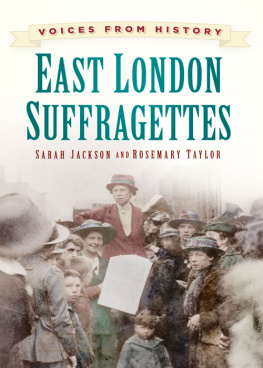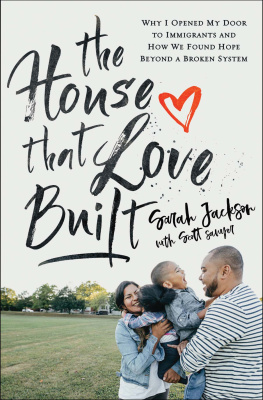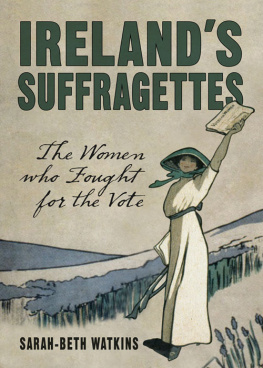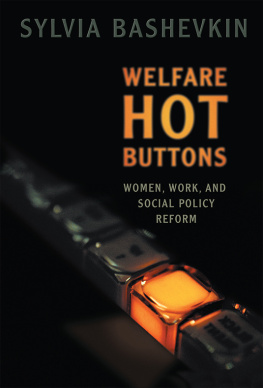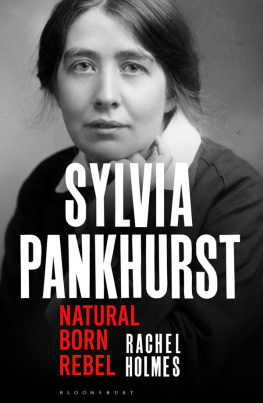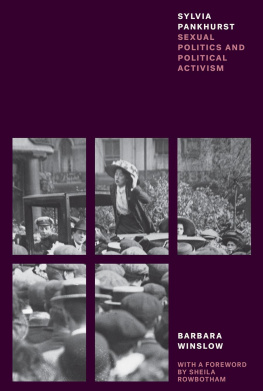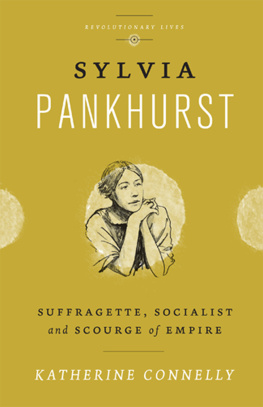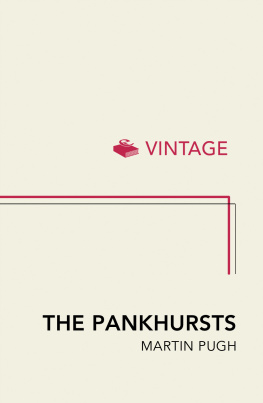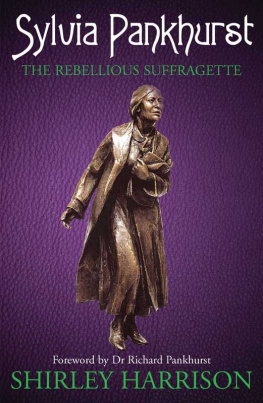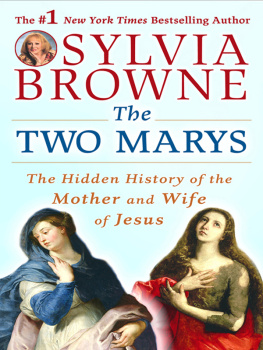
CONTENTS
In July 2012 the suffragettes were finally awarded their proper place on the stage of British history. In the midst of a national celebration watched by millions, a group of women in Edwardian dress, wearing sashes and bearing Votes for Women banners, stepped on to the AstroTurf of the Olympic stadium in Stratford.
But how many of those in the Olympic boroughs know the role played by the suffragettes on their doorstep, 100 years ago? This book aims to tell the story of the East London Federation of the Suffragettes and some of the remarkable women behind their fascinating projects and campaigns, including their leader, Sylvia Pankhurst.
One
Of course London has had an east as long as it has had a centre, but the East End didnt form in the popular imagination until the late nineteenth century, when industrialisation and the social changes which followed in its wake caused the areas remaining middle-class families to flee to the suburbs. After more than a century of fame (and infamy), Bow, Stepney, Whitechapel, Bethnal Green, Poplar and Wapping feel familiar even to those who have never set foot in them.
To many respectable middle- and upper-class Londoners in the late 1800s and early 1900s, the East End seemed to be at once on their doorstep, and a kind of foreign country. With its poverty, disease, slums and sweated industries, it was too close for comfort, and many feared that the political activism, industrial action and religious dissent which were also a hallmark of the area would seep westward. In 1891, writer John Henry Mackay described the East End as a hell of poverty. Like an enormous, black, motionless kraken, the poverty of London lies there in silence and encircles with its mighty tentacles the life and wealth of the city and of the West End.
At the same time, the harsh living and working conditions experienced by many of the East Ends community seemed unimaginable and nightmarish. The inhabitants themselves were subject to intense prejudice. One journal from 1888 observed that A shabby man from Paddington, Marylebone or Battersea might pass muster as one of the respectable poor. But the same man coming from Bethnal Green, Shadwell or Wapping was an East Ender; the box of bug powder must be reached for, and the spoons locked up.
Despite these fears, the East End fascinated many in London and beyond. It represented more than a geographic area, becoming a symbolic battleground for a host of conflicting ideas about work, home, health, identity, democracy and religion.
Poverty
The thick black lines on Charles Booths map of London memorably visualise the poverty which was one of the defining characteristics of East London at the end of the nineteenth century. Victorian philanthropists and reformers, including William Booth and Octavia Hill, had campaigned to raise awareness, alleviate suffering, and improve conditions. Despite this, the East End into which Sylvia Pankhurst arrived in 1906 was not greatly changed from the days of Charles Dickens. In 1895 German anarchist Rudolf Rocker visited Tower Hamlets to observe and document the conditions in which people lived and worked, which he described in The London Years :
There were at that time thousands of people in London who had never slept in a bed, who just crept into some filthy hole where the police would not disturb them. I saw with my own eyes thousands of human beings who can hardly still be considered such, people who were no longer capable of any kind of work. They went about in foul rags, through which their skin showed, dirty and lousy, never free from hunger, starving, scavenging their food out of dustbins and the refuse heaps that were left behind after the markets closed.
There were squalid courts and alley-ways, with dreary tumble-down hovels, whose stark despair it is impossible to describe. And in these cesspools of poverty children were born and people lived, struggling all their lives with poverty and pain, shunned like lepers by all decent members of society.
While Rockers account is typical of many examples of slum literature in that it dehumanises the East Ends inhabitants they are described as a mass of animal-like creatures, without individual faces, names or voices it paints a vivid picture of the squalor in which people were forced to live.
In the notorious overcrowded slums, families were housed in single rooms, with only a single outside lavatory and a water pump shared with several houses. Many of the buildings were falling into disrepair, with broken stairs, peeling wallpaper, or chunks of plaster pulling away from the ceiling. The slums were also full of vermin black beetles, bed bugs and rats were perpetual unwanted guests of the human tenants.
Disease was an inevitable consequence of such living conditions. There were repeated outbreaks of cholera in East London during the nineteenth century, including a very severe epidemic in 1866 in which more than 5,000 people died. Infant mortality was also extremely high, reaching 250 infant deaths per 1,000 live births in some of the worst slums, such as the notorious Old Nichol in Shoreditch.
At this time doctors charged a fee and medicine was expensive. In 1911, as part of a wave of reforms, the Liberal government introduced National Health Insurance (a forerunner of the National Health Service) for employees earning less than 160 per year. The worker contributed 4d, the employer contributed 3d and the government 2d, which provided sickness benefit entitlement of 9s, free medical treatment and maternity benefit of 30s. Although an estimated 13 million workers came to be covered under this scheme the new provisions still only benefited a small portion of the population. For example, a man might be covered through his workplace, but his family would not be.
Another crucial factor which contributed to poor health was a lack of adequate food for nutrition, or even for survival. Starvation was a real and insistent danger facing the poorest inhabitants of East London, as this excerpt from Jack Londons 1903 book The People of the Abyss reveals:
The Carter was hard put to keep the pace at which we walked (he told me that he had eaten nothing that day), but the Carpenter, lean and hungry, his grey and ragged overcoat flapping mournfully in the breeze, swung on in a long and tireless stride which reminded me strongly of the plains wolf or coyote. Both kept their eyes upon the pavement as they walked and talked, and every now and then one or the other would stoop and pick something up, never missing the stride the while. I thought it was cigar and cigarette stumps they were collecting, and for some time took no notice. Then I did notice.
From the slimy, spittle-drenched sidewalk, they were picking up bits of orange peel, apple skin, and grape stems, and they were eating them. The pits of greengage plums they cracked between their teeth for the kernels inside. They picked up stray bits of bread the size of peas, apple cores so black and dirty one would not take them to be apple cores, and these things these two men took into their mouths, and chewed them, and swallowed them; and this, between six and seven oclock in the evening of August 20, year of our Lord 1902, in the heart of the greatest, wealthiest, and most powerful empire the world has ever seen.
As one of its raft of reforms, the Liberal government had introduced free school meals for the poorest pupils in 1906, but had crucially failed to enforce the measure, instead allowing Local Education Authorities to decide whether or not to take up the scheme. By 1912 only half of all councils in the country had done so.
Poverty forced many children out of school at an early age, especially girls, for whom education was not viewed as a necessity. One 1899 report looked at regular part-time work done by boys and girls. Girls, all aged 6, were employed in the following ways:
Next page
